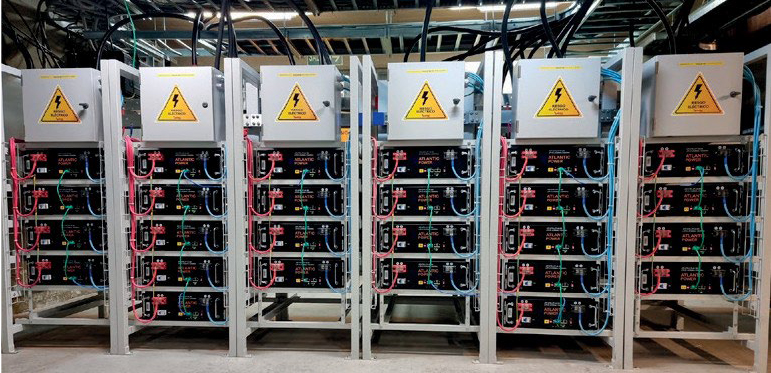|
Escuchar artículo
Getting your Trinity Audio player ready...
|
The replacement of lead batteries with LiFePO4 technology with a capacity of 266.2 KWh that supports the energy supply of an important telecom in Bolivia that provides data and Internet services, shows important advantages described below.

Objective
The replacement of lead batteries with LiFePO4 technology with a capacity of 266.2 KWh that supports the energy supply of an important telecom in Bolivia that provides data and Internet services, shows important advantages described below.
Background
Following an increasing decrease in the backup time provided by the old accumulators to critical loads, the telecom analyzed the state of health of the battery banks made up of lead-acid cells and came to the conclusion that an urgent replacement was necessary. In search of a reliable long-term solution, parameters of lithium vs. lead-acid batteries were compared:
- Number of charge and discharge cycles: on average 2500 vs. 400 cycles at 80% depth of discharge.
- Recharging capacity: 0.5C vs. 0.1C (fast recharging of lithium accumulators).
- Safety and efficiency: LiFePo4 can be installed in any position as they have no chance of leakage, while the chances of lead acid battery leakage are high. The self-discharge rate of a lead-acid battery is 5% higher than that of a lithium-ion battery.
- Weight, volume: the volume of lithium iron phosphate battery with the same Wh value is 1/3 of the volume of lead-acid battery and the weight is 1/3 of lead-acid battery.
- Cost: Lead-acid batteries are cheaper than LiFePO4 batteries by approximately 60% in capacities starting from 4.8 Kwh. However, due to cycle life, capacity deterioration and other aspects of the analysis, the lifetime of the LiFePO4 battery is much longer and huge savings can be generated.
- Environmental: LiFePO4 batteries do not contain heavy metal elements harmful to the human body versus lead which cause high pollution due to the heavy materials and antimony they contain.

Value added to the customer
The BMS (Battery Management System) is a crucial component in a LiFePO4 battery. It monitors the cells and makes sure that they all work together properly within each battery pack. If any of the cells start to malfunction, the BMS will take action to correct the problem, which may include shutting down the entire battery pack completely.
Thanks to CMMSEdge IoT platform, any BMS parameter can be viewed online, and graphs of voltage behavior, charge and discharge current, state of charge (SOC), state of health (SOH), data that will allow us to analyze events in great detail can be captured..
From the point of view of the company in charge of maintaining the accumulators: during the warranty period, thanks to the CMMSEdge IoT platform, it will be able to respond proactively to any alarm event. From the Telecom’s point of view: there is a continuous monitoring that feeds a database and history that allows more accurate diagnostics, generates weekly or monthly reports automatically and above all, the availability of a reliable energy backup that ensures no interruption of the services provided thanks to the proactivity provided by CMMS here EDGE in terms of preventive, corrective and proactive maintenance..


You can read more about the CMMS edge predictive maintenance platform in our ebook: Importance of real time assets monitoring , about a real case of another of our customers
Would you like to learn more about CMMS here, contact us here, or leave your information in the chatbot of our site so that a representative of our company can contact you as soon as possible.





No comment yet, add your voice below!